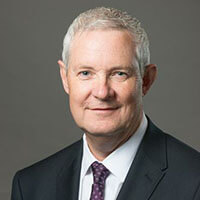I recently attended the annual INTELEC event, this year held on the sunny Gold Coast of Australia, along with other members of the Vertiv team. I thought I’d take a break from my edge article series to reflect on the event and the emerging trends having an impact on the telecommunications industry.
Firstly, INTELEC is a premium forum held all over the world for emerging trends and key issues about powering communications resources – a fairly bespoke area, but one that is becoming ever more important as people and businesses alike link everything to the internet and digital communications tools.
Unsurprisingly, 5G was a major talking point throughout the event, and its gravitas and rapid development was the foundation for our key takeaways from the event.
The telecoms industry, in Australia and around the world, is at something of a crossroads. On one hand, the demand for reliability of existing infrastructure to be always available, always on, is becoming more paramount, and telecoms businesses need to find the line in the sand where they’re investing in infrastructure to keep it all running, while also investing in new technology and of course, remaining commercially viable.
On the other hand, there’s this insatiable demand for more and more data, and with as low latency in its transit as is humanly possible. Telcos are betting big and positioning their main offerings around unlimited data plans to satisfy this demand on a consumer and business level, but saying that and having the resources to physically provide it could be two different things.
That’s what 5G is about, and as machine-to-machine communication, more video, VR and new aspects of IoT come further into the fold, telcos face real challenges.
Meanwhile, they also have new competition from low-powered Wi-Fi providers. These are much cheaper systems than anything in the 5G world, and while huge investment is going into 5G, telcos need to be mindful of these kinds of solutions undercutting the value of that investment.
The telecoms industry is changing like no other really. If we jump back a bit in history, big telco’s main priority was to transfer a lot of voice, and small amounts of data. That has gravitated to lower amounts of voice, and incomparably large data sets.
One thing that hasn’t changed, but perhaps has just become more important, is that ‘you can’t afford for it to go down.’ Much of the innovation that has come out of the telecoms and networking industry has been truly astonishing, but at the end of the day, priority number one is still keeping the data flowing. Without that, all the fun stuff is irrelevant.
The future looks promising. It resonated with me during my many conversations at the event that, the industry understands this. Whatever shape 5G will ultimately take, we feel we’re well positioned to help telcos keep their systems running, so they can focus on the fun stuff. We’re already working with important organisations developing the 5G roadmap, such as Vodafone and Chorus NZ.
Another interesting takeaway for me was the development in hydrogen fuel cell batteries – these have been on the radar for some time now, but it’s the first time I’ve seen examples of telecoms companies bringing these to market. It’s a space worth watching as the interest in and demand for energy efficient batteries in power solutions grows.
Those were my main takeaways, and here are some thoughts from the Vertiv team:
“No one knows what 5G looks like. Telcos in Australia and the world over are pushing ahead with their versions but the 3rd Generation Partnership Project (3GPP) has not actually finalised the 5G protocol yet. Until that happens, what we’re talking about in terms of 5G is predictions and well-educated guesses.”
“The event featured a lot of discussion on data growth and potential 5G applications and what network criteria is required to support it all. Network reliability and latency management are certainly two of the main priorities for the industry. It was interesting too to hear discussion on energy storage and lithium batteries as a possible solution for this.”
“Technology changes and advancements need to be driven by solving industry challenges in a holistic manner, from design, functionality, form factor, application all the way to ‘attractive cost benefits’. We need more visibility in growing gaps in selecting, evaluating, buying and using technology – these gaps are diminishing value for both vendors and end users. Companies that can minimise the disconnect will maximise the benefits and value on offer and ultimately succeed.”
“Hydrogen fuel cells with reformers using methanol are finally on the market and will replace generators in specific solutions. Lithium ion vs. lead acid batteries was a major talking point at INTELEC. We’ll see more innovative solutions from lead acid suppliers to drive higher performance and keep up with lithium.”






